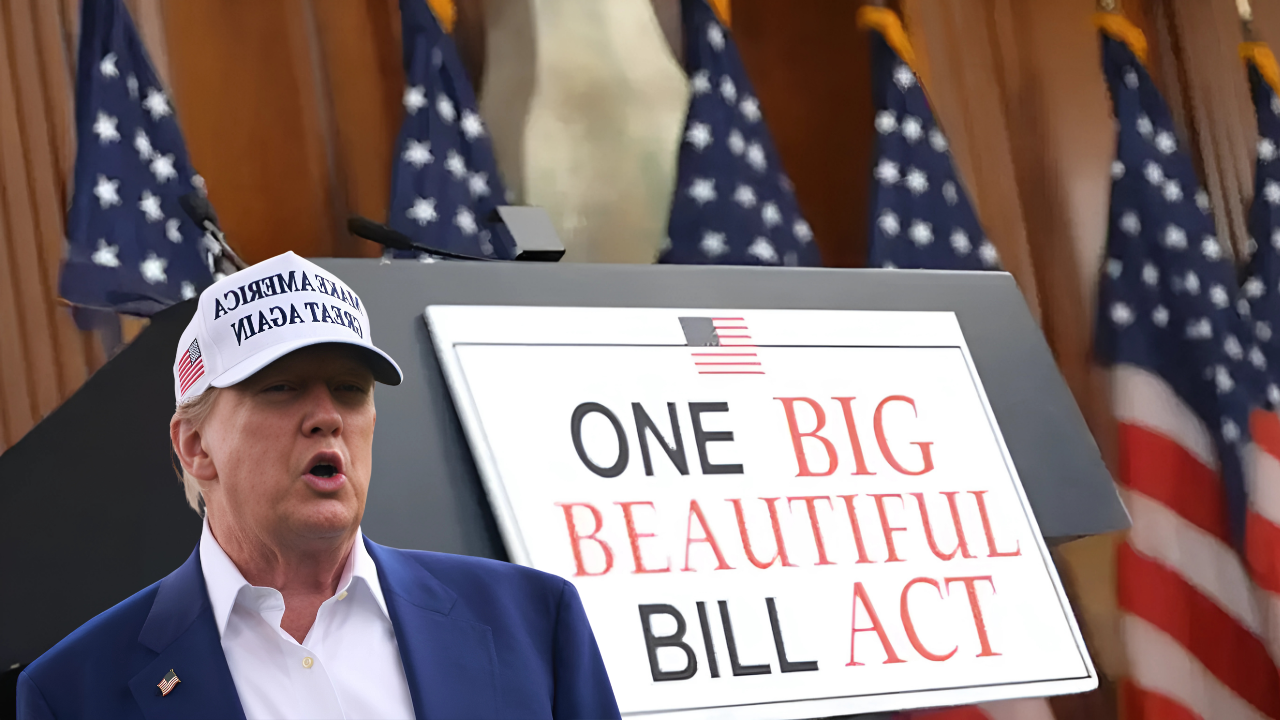President Donald J. Trump’s “One Big Beautiful Bill” is positioned as a landmark legislative achievement, promising sweeping economic benefits for working and middle-class Americans. According to a detailed state-by-state analysis by the Council of Economic Advisers (CEA), this bill will usher in the largest tax cut in U.S. history, boost wages, and increase take-home pay for families across all 50 states. The legislation also aims to reduce government spending and cut the federal deficit, setting the stage for long-term national prosperity.
Key Features of the Bill
-
Largest tax cut in American history
-
Significant wage increases for workers
-
Higher take-home pay for families
-
Generational spending cuts
-
Deficit reduction to ensure fiscal stability
How the Bill Benefits All 50 States
State-by-State Economic Impact
The CEA’s analysis highlights that every state will experience substantial economic gains. The benefits are twofold: long-run, inflation-adjusted wage increases and higher take-home pay for a typical family with two children. These gains are attributed to lower effective tax rates, enhanced business deductions, and incentives for investment and labor participation.
| State | Wage Increase (Inflation-adjusted) | Take-home Pay Increase (Family of 4) |
|---|---|---|
| Alabama | $4,800 to $9,100 | $6,500 to $10,800 |
| California | $7,500 to $14,300 | $9,200 to $16,000 |
| Florida | $5,800 to $11,000 | $7,500 to $12,700 |
| New York | $6,800 to $13,000 | $8,500 to $14,700 |
| Texas | $6,000 to $11,300 | $7,700 to $13,000 |
| Massachusetts | $7,700 to $14,800 | $9,400 to $16,500 |
| Illinois | $6,200 to $11,800 | $7,900 to $13,500 |
| Washington | $7,200 to $13,800 | $8,900 to $15,500 |
| Georgia | $5,800 to $11,000 | $7,500 to $12,700 |
| Pennsylvania | $5,700 to $10,900 | $7,400 to $12,600 |
For the full list of states and detailed figures, refer to the official White House analysis.
Mechanisms Driving Economic Growth
Tax Cuts and Wage Growth
The bill reduces statutory tax rates and expands deductions for pass-through businesses. It also allows full expensing for investments in new equipment, research, and factories. These measures are designed to:
-
Encourage business investment
-
Stimulate job creation
-
Drive up wages through increased demand for labor
Boosting Take-home Pay
Take-home pay rises because employees keep more of their earnings as taxes are reduced, and wages are expected to climb due to a more robust economy. The CEA notes that these effects are amplified by a stronger incentive to work and increased spending power among Americans.
Fiscal Responsibility and Deficit Reduction
A critical aspect of the bill is its focus on generational spending cuts and deficit reduction. By curbing unnecessary government expenditures and fostering economic growth, the legislation aims to place the U.S. on a more sustainable fiscal path, ensuring prosperity for future generations.
Methodology Behind the Projections
The CEA used standard academic models, proven successful in forecasting the effects of the 2017 Tax Cuts and Jobs Act, to estimate the economic impact of the One Big Beautiful Bill. The analysis accounts for:
-
Changes in investment and GDP
-
Wage growth from lower tax rates and business incentives
-
Increases in labor supply due to improved work incentives
Comparative Table: Wage and Take-home Pay Increases in Select States
| State | Wage Increase | Take-home Pay Increase |
|---|---|---|
| California | $7,500–$14,300 | $9,200–$16,000 |
| Texas | $6,000–$11,300 | $7,700–$13,000 |
| Florida | $5,800–$11,000 | $7,500–$12,700 |
| New York | $6,800–$13,000 | $8,500–$14,700 |
| Illinois | $6,200–$11,800 | $7,900–$13,500 |
Broader Implications for American Families
Increased Economic Security
By raising take-home pay and wages, the bill aims to enhance the economic security of millions of American families, especially those in the working and middle classes. The extra income can be used for education, healthcare, home ownership, and savings, contributing to overall well-being.
Encouraging Investment and Innovation
With full expensing for new equipment and R&D, businesses are incentivized to invest in technology and innovation, which can lead to higher productivity, more competitive industries, and better job opportunities for American workers.
Strengthening the Labor Market
Lower taxes on individuals and businesses increase the incentive to work and hire, potentially reducing unemployment and underemployment while supporting higher participation rates in the workforce.
President Trump’s One Big Beautiful Bill is designed to deliver broad-based economic benefits to all Americans, regardless of state or income level. By combining historic tax cuts, wage growth, and increased take-home pay with responsible fiscal policy, the legislation seeks to secure lasting prosperity and opportunity for families across the nation.
FAQs
Q1: Who benefits the most from the One Big Beautiful Bill?
Working and middle-class families in all 50 states will see the largest benefits through higher wages and increased take-home pay.
Q2: How does the bill increase take-home pay?
By lowering taxes and boosting wages, workers keep more of their earnings, resulting in higher after-tax income.
Q3: Will every state see the same level of benefit?
While all states benefit, the exact increase in wages and take-home pay varies depending on local economic conditions and average incomes.
Read More July 2025 Social Security Dates: When Your Benefits Hit the Bank
